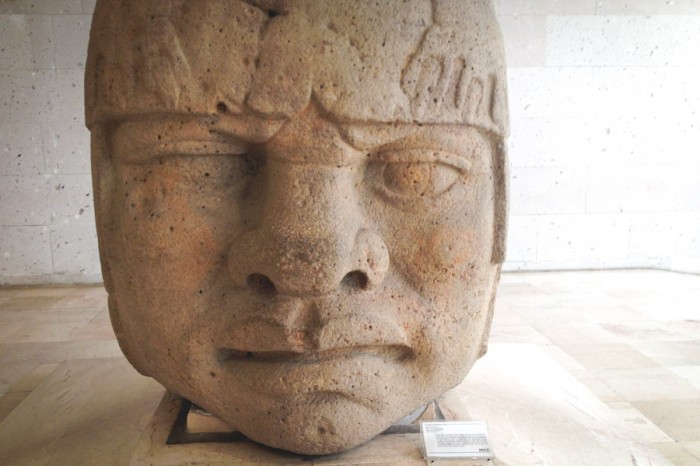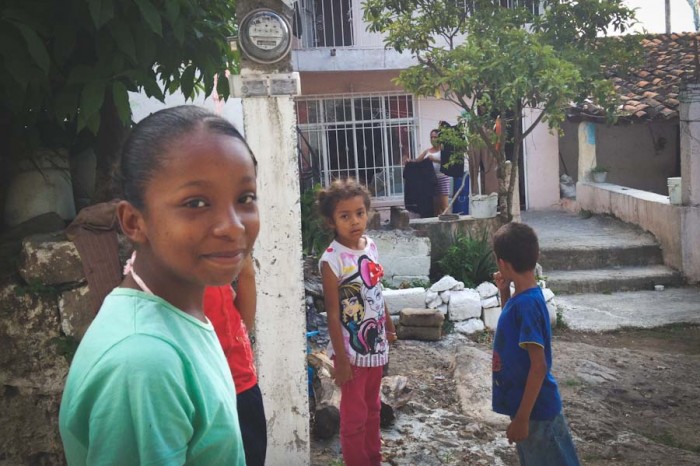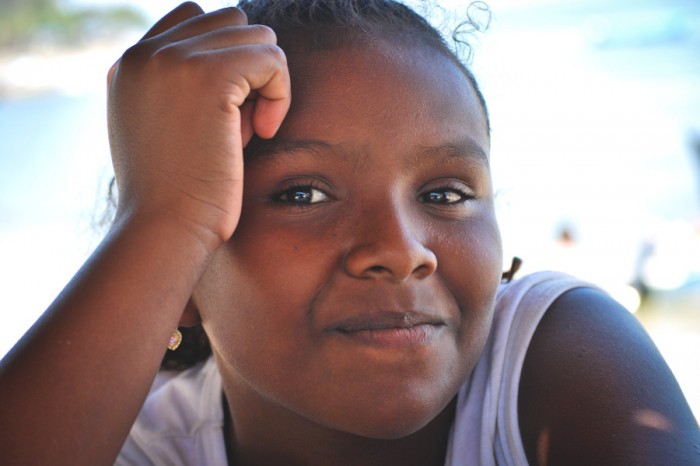I grew up in Madison Wisconsin. Beer, bratwurst, and football, the pillars of Wisconsin society are the trifecta of all things I hate. I don’t like winter either. The only way I could be more counter-cultural is if I had been born lactose intolerant.
Within the mainstream culture was the sub-culture of what it meant to be a black Wisconsinite. I often wished someone would just give me a handbook of does and don’ts because it seemed that every time I went to school I found and broke a new taboo. Having natural hair, playing the wrong sport, going to the wrong church, being too nerdy, always carrying around a notebook like Harriet the Spy and living in a white neighborhood were just a few of my sins.
It wasn’t until I was 16 that I realized how limited my world view on black identity was.
That summer, my mom took me to Senegal as a part of a faculty exchange between The University of Wisconsin and the University of Saint Louis, Senegal.
Going to West Africa was a revelation. The people were gorgeous, the food, the colors, the clothes, the music. I fell in love with the sound of guttural French mixed with Wolof and the custom of adding mint to the third cup of tea each afternoon.
What really struck me was the variety of people. Being in an all-black country for the first time helped me to understand that there was more than one way to be black, more than ten, more than a thousand, that you could be black and be or do anything and have any kind of life.
It was a healing experience.
My first taste of the world inspired what my mom called wanderlust. I wanted more and I got it. Since then I have lived, studied, and worked around the world. I’m not now fluent in Spanish, can struggle through some basic conversations in Japanese and order dinner in Thai, French, and Portuguese. I’ve been places where people have thought I belonged — and others where people stared at me like I was from outerspace.
It’s the full complement of these experiences that have helped me navigate and choose who I want to be in the world — a citizen of the world, a teacher, a community organizer, and a study abroad program leader. Since 2006 I’ve lead eight trips abroad with over 200 high school aged youth in tow to Japan and Guatemala. It has been my privilege to create opportunities for youth to get to know other cultures and challenge their own ideas of identity.
As I continue this work, my goal is to reach youth of color, especially those who, like me, felt ostracized and limited by the expectations of others. I want all youth to know that who they are is exactly right, even if it isn’t who they think they should be. So I came up with a plan to start my own program.
While there are many study abroad opportunities for high school aged youth in Seattle and even a few that boast of being geared towards youth of color, there are not many that are actually designed and run by people of color. I would like to see that change. Who better to facilitate their experiences, than someone with first-hand knowledge on what they might be going through?
My first trip will leave in summer 2015 and will be for black identified youth ages 15-18 interested in writing, learning Spanish, and visiting another country to do a comparative study of the African diaspora there.
I’m writing this article from Puerto de Veracruz on the southeast coast of Mexico, scouting the area as a location for that program.
One of the reasons I chose to come to Veracruz is because of its rich Afro-Mexican history.

In preparing for the program I began to research Afro-Mexican culture. I didn’t find much.
But while the census is not entirly reliable, there is an estimated population of 400,000 Afro-Mexicans living in concentrated communities throughout Oaxaca, Guerrero, and Veracruz, according to a recent article published by CNN Mexico. That’s less than one percent of Mexico’s population — but it’s still a lot of people.
When deciding where in Mexico to start my search I chose Veracruz because of the Festival de Negritud, an annual festival celebrating blackness and the African history in the area, which takes place in the town of Yanga.
Yanga is named for its founder Gaspar Yanga. According to the story told to me by Carmen Cruz, a guide at the Veracruz City Museum (which differs slightly from the stories I read online) Yanga was an African prince who traveled to Mexico as a slave trader.
As many historians love to point out, slavery did exist in most of Africa, though not with the same brutality of American slavery. So Yanga arrived and sold his cargo, but stuck around long enough to see the terrible conditions he had condemned them to. He then successfully led an armed rebellion to free the slaves and went on to found a town called San Miguel de los Negritos that still exists today — but was renamed Yanga in the 1800s. I will be going there on Thursday.
Despite the area’s pride in hosting a “Festival of Blackness,” my search for Afro-Mexicans in Veracruz has been the cultural equivalent of playing Where’s Waldo when everyone is wearing a red and white shirt.
I ask people about Afro-Mexicans and they point to their noses and tell me about their black grandfather. They run their hands through their dark curly hair and say “me llamen el negrito en mi familia,” — they call me the little black one in my family.
But after generations of acculturation — of people denying their heritage in order to find employment or simply be accepted in the broader Mexican society — even those with visible roots may not self-identify as Afro-Mexican.
And being black here is definitely not like being in Senegal!
Since arriving in Puerto de Veracruz, I have been an object of fascination. People stare at me openly and try to take my picture. Men blow kisses and wink. “Morena,” — “dark one,” they call me.
While all the attention is a bit much, my skin color has provided an easy icebreaker, because despite the history of black heritage, people see me and know I’m not from here. At the end of my meeting today with Magdalena Fernandez and Antonio Falcon from the State Commission on Human Rights I asked where I might find some actual Afro-Mexicans.
“Coyoliyo,” they suggested. 200 pesos and an hour cab ride later, I arrived in a one church town nestled on a hillside amid a forest with a general store and a one room library in the center. It’s the kind of town you go to and feel like you just entered someone’s home without knocking. I didn’t know exactly where to start.
Having drunk a liter of water in the cab, I began by asking for a bathroom. This yielded the anticipated results and broke the ice between me and a woman who has a toilet in her garage that she rents for three pesos.
From there I met a woman who sold a fruit called nagas. I bought of the little a bag of the little yellow fruit that looked a bit like cherries and confessed I was hoping to meet some Afro-Mexicans. Both women looked at me a little oddly and said, yeah there are some, but then began to talk amongst themselves. I wandered over to the library which was full of children and talked to the woman there, but didn’t really get anywhere.

The people in Coyoliyo did have slightly darker skin than those I have been seeing elsewhere, but there was only one little girl who looked black to me.
Not knowing how to continue, I asked about the town itself and if anyone could show me around. The woman turned me over to a group of eight-year-old girls and told them to take me to the river. We picked our way down a rocky path, me chattering, them staring at me side-eyed.
Only one would actually answer my questions and even she was pretty tight lipped. I shared the bag of fruit and that earned some smiles, but by the time we passed the white donkey and reached the edge of a dry river bed, I was no closer to my goal and the stares from houses we passed didn’t feel very welcoming.
On the ride back, the cabbie and I discussed the town. He had never been there before either. “Did you find what you were looking for?” he asked.
Not exactly, but the trip was definitely worth it and like any good adventure left me wanting to know more.
The first thing I learned about the difference between being a teacher and being a facilitator is that teachers are supposed to have answers, but facilitators pose the questions and allow participants to wrestle with their own conclusions.
I came here expecting answers, but I am not in the least disappointed to find more questions.



Hello , I read your story and of course I’m fascinated by the mixture of blood lines in my native country mexico is not really known for there black roots and the main reason its not visible is because of the spanish church allowing marriage between all caste I’m sure black people are sprinkled here and there throughout the country and alot of us that dont visibly look black but have the bloodline running through us as george lopez found on his show he was 4% sub saharan african but the majority live in the costa chica of guerrero and oaxaca and enjoyed a program on cbs by Henry Louis Gates called blacks in latin america and there is and episode of mexico and peru real informational and I hope some one can give them and voice so they can be included in the census as black so they can get help they need .
According to the Mexican anthropologist Gonzalo Aguirre Beltran, initially African women slavs were more numerous than male slaves. He writes, “…the first year of the conquest…99% of the individuals of white stock were males, as were 6% of those of Negro stock.”
“Mulatto slaves did not necessarily increase in numbers while the others fell, but rather, they were the last of the African-descent slaves to disappear.” – Dennis N. Valdes, 1987.
The Afromexican population was so small never exceeding 2% of the total population during the colonial period [Palmer, Colin A., 1976].
“Afromexicans in these communities have not integrated themselves into the national society [Beltran, 14].”
I think you may have hit upon a mode lode of African-Latin-American issue.
Of course African people were brought to all the Americas. The ones who came to tropical climates were able to adapt and survive, albeit in the lower echelons of society. Some who were brought to the cold elevations of the Andes did not do well.
However, there are some interesting histories like the Africans who first landed in what is now the province of Esmeraldas, Ecuador. A ship carrying African slaves went shipwreck off the coast of Esmeraldas sometime in the XVII century, most of the survivors were the slaves who made to the northern coast of Ecuador and established and lived as free people for a number of years before the Spanish crown submitted them. I don't know if there is another story similar to this in the Americas of the colonial time, but, I would suggest to the writer to look into this fascinating story: some African-Ecuadoreans lived as free men and owned their own destiny for some time in the Americas. Sorry I can't submit notations since I am reading this article while on vacations in Mexico.
Good luck in your endeavors.
The Africans that were taken to Mexico were Fulani, Mandinka, Wolof and Baga. Not sure if you had this information but I am also trying to find my Fulani family in Mexico. I have family currently in Mexico that are now scattered around.I feel like im getting close but I am also in search :)
Throughout my life when people asked me if I was mixed I’d always say no. I’ve always thought that I was mestizo. I always identified myself as mestizo,like mainly all of Mexico. But I’ve done lots of research and come with the conclusion that I’m not just mestizo. My mother is from a state in Mexico called Durango, she is very fair skinned. While my dad is from the state of Guerrero also in Mexico. He is from the Costa Chica Coyaquilla Sur. My father is dark skinned, in fact he is the darkest out of his siblings. I feel like you should have traveled there, maybe there you would’ve found what you were looking for. But if you were looking for predominantly “African” features on people. Than I think it would be hard to find unless the person was half black. Because there was only a certain amount of african slaves in Mexico and they were pushed to the south, they won’t look predominantly black they’ll look Afro-mestizo if they are. The black people in Mexico have assimilated to the culture there adding fragments and pieces to enrich the culture just like many other africans who went to Spanish America and parts of the Carribbean.I hope you have more amazing experiences, witnessing other cultures and the results of the African Diaspora! I’m black & I’m proud!